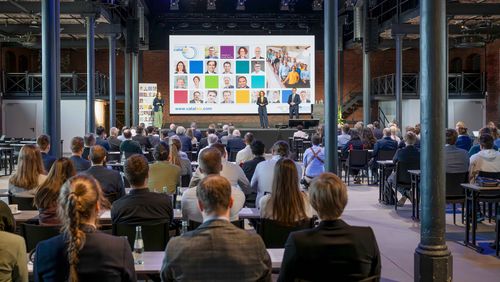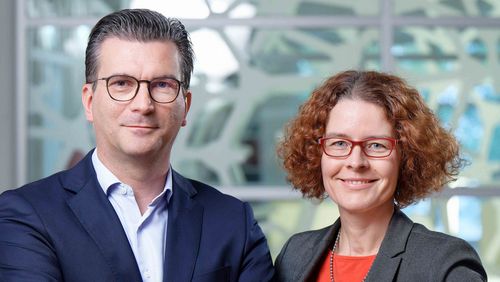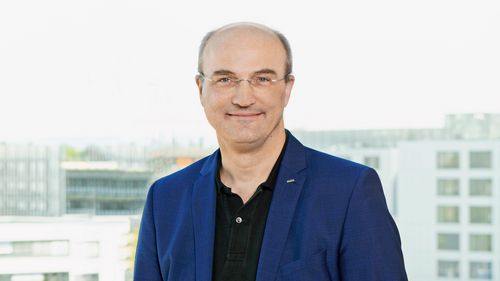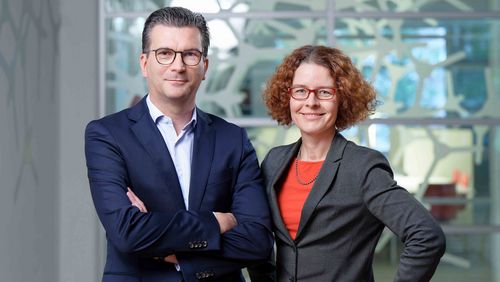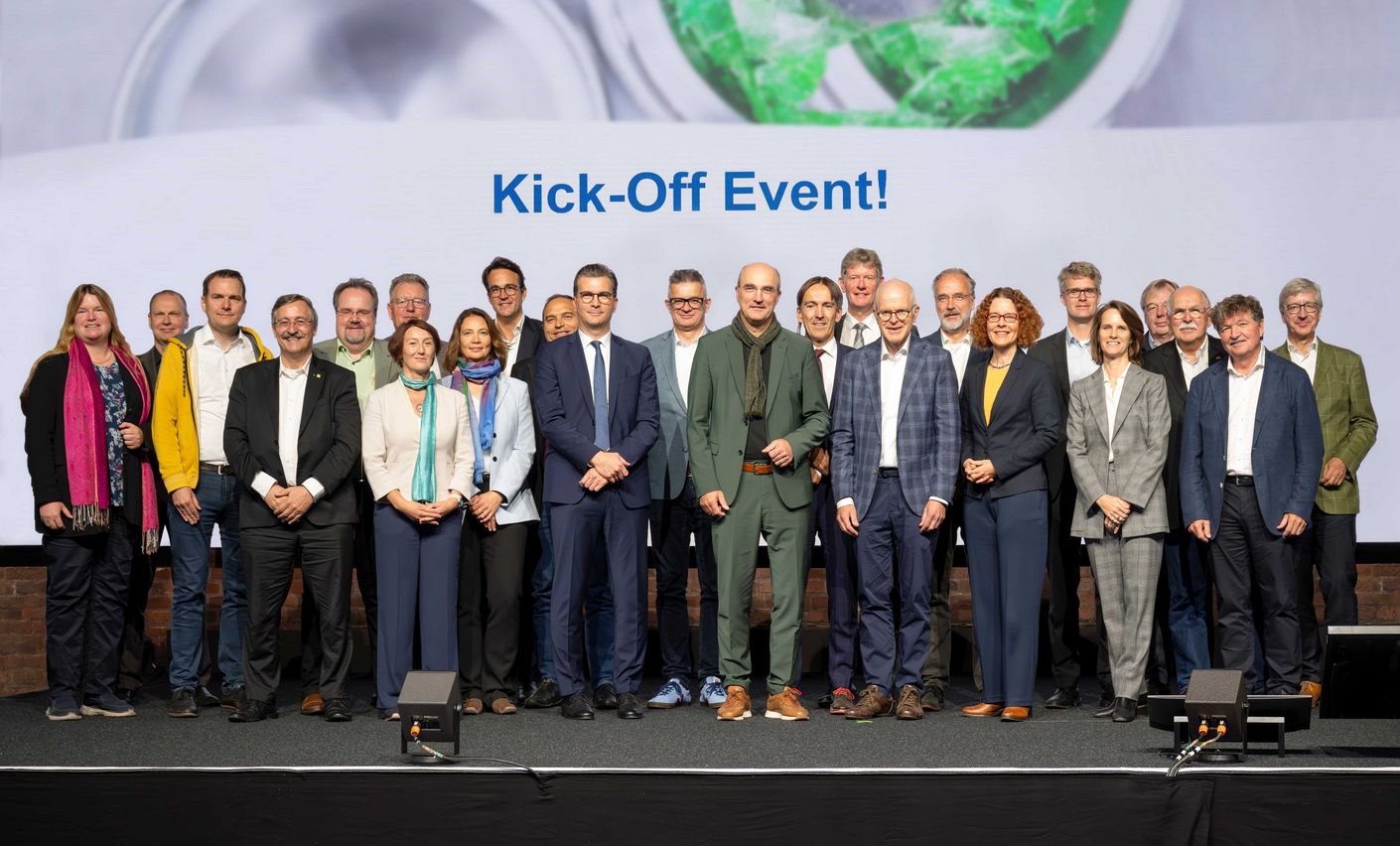
The project of the century has begun
The catalaix project at the WSS Research Centre has officially commenced its mission. At a festive event to launch the project, researchers demonstrated how they plan to break down plastics into their individual components—and lay the foundation for a multidimensional circular economy.
The team led by RWTH Aachen University professors Regina Palkovits and Jürgen Klankermayer have set themselves an ambitious goal. Indeed, their aim is nothing less than revolutionising the chemical industry. Today, industrial chemists employ a series of complex, sophisticated processes to manufacture a wide range of products from petroleum-based raw materials. At the end of their life cycle, most of these products are simply thrown away.
The Aachen researchers want to change this by using tailor-made catalysts that are capable of breaking down these products into their molecular building blocks—which can then be fed into a multidimensional circular economy. In this context, the researchers will focus first on the plastics industry. Last year, they began realising their ambitious endeavour in the WSS project of the century: their research proposal was selected as winner of the Werner Siemens Foundation’s ideas competition held to celebrate the Foundation’s centennial, and their catalaix project was awarded a grant of one hundred million Swiss francs.
Congratulations, talks, prognoses
At the end of September, some two hundred guests from the worlds of politics, industry and academia were invited to celebrate the launch of the new catalaix WSS Research Centre in Aachen. At the festive—and scientifically substantial—event, Siemens Family Advisory Board Member Christina Ezrahi congratulated the researchers on behalf of the Foundation, while Sibylle Keupen, mayor of Aachen, and Ulrich Rüdiger, rector of RWTH Aachen University, spoke of the significance the new research centre will have for the city of Aachen and its university.
In a series of discussions and presentations, experts then placed the project in a wider context. Steffen Knodt, board member of the German Association for Marine Technology and the UN Ocean decade, described the negative impact of plastic waste in the oceans on the marine ecosystem, saying that, by 2050, there will be about as much plastic waste in the ocean as there are fish. In his talk, André Bardow, professor of energy and process systems engineering at ETH Zurich, outlined the challenges inherent in creating a climate-neutral plastics industry. In addition to attaining a recycling rate of at least seventy-five percent, he said using large quantities of biomass and renewable energies is essential. Bert Weckhuysen, professor of inorganic chemistry and catalysis at Utrecht University, then described the refineries of the future where chemical products will be created from plastic waste and renewable energies rather than from petroleum.
Cleaving chemical bonds
Regina Palkovits and Jürgen Klankermayer introduced the core idea behind catalaix and outlined their initial priorities at the new research centre. Catalysis—the process in which a chemical reaction is accelerated or made possible in the first place—is the sum and substance of their project. To date, catalysis has been used mainly to form bonds, Klankermayer explained—and then got straight to the point: “But now, we’re also looking to cleave chemical bonds.” Specifically, they want to break down bonds in plastic materials to yield high-value molecular building blocks that can be utilised in various production chains—to utilise plastic waste as a raw material.
Regina Palkovits pointed out that tailor-made catalysts alone won’t bring about the desired shift towards a sustainable chemical industry. Developing scalable processes that maintain efficacy even at high production volumes is crucial. To meet this challenge, the make-up of the catalaix team is decidedly interdisciplinary, with researchers in seventeen different research groups covering each step of the complex process—whether in the lab, the pilot plant, or regarding the value chains for the resulting products.
Plenty of ideas, initial results
The work is already progressing rapidly. Jürgen Klankermayer demonstrated how plastic polyethylene can be converted into biodegradable polylactic acid, and he presented a polymer adhesive developed by his research group whose bonds are broken down via an electrical power source.
Several catalaix group leaders also reported the initial results of their approaches in short talks and on posters. For example, Ulrich Schwaneberg, who is developing customised material-binding peptides that adhere to various plastics, a development that could play a decisive role in separating mixed plastics. His colleague Lars Blank is focusing on microorganisms that split plastic compounds; indeed, Blank’s team has genetically modified the Pseudonomas putida bacterium so that it can simultaneously break down different plastic building blocks.
It will be interesting to see how the “catalaix” project will influence the plastics and chemical industry in the coming years.
catalaix
Most chemically manufactured products are thrown away at the end of their life cycle. The research team led by Regina Palkovits and Jürgen Klankermayer at RWTH Aachen University want to change this—with the help of catalysts that accelerate chemical reactions or make them possible in the first place. Their primary goal is using novel catalysts to break down plastic materials and mixed plastic waste into versatile building blocks. In the process, they plan to develop a modular system that will pave the way for a multidimensional circular economy in the chemical industry.
Funding from the Werner Siemens Foundation
100 million Swiss francs
Project duration
2024 to 2034
Project leader
Prof. Dr Jürgen Klankermayer, Chair of Translational Molecular Catalysis, RWTH Aachen University
Prof. Dr Regina Palkovits, Chair of Heterogeneous Catalysis and Technical Chemistry, RWTH Aachen University
